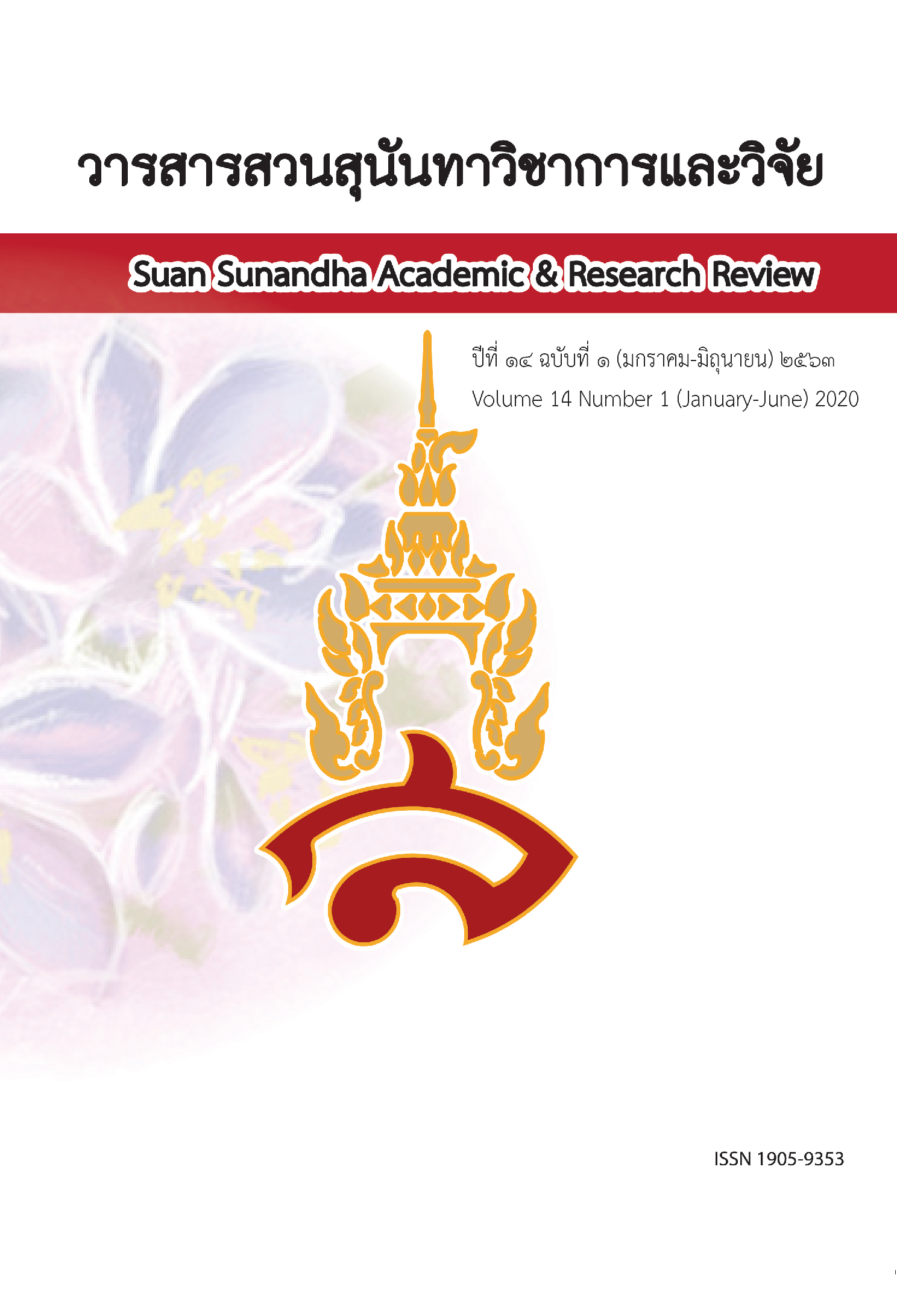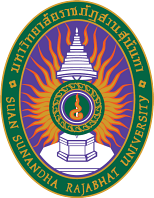ทฤษฎีและการเรียนรู้ในโลกยุคดิจิทัล: ทฤษฎีเชื่อมโยงความรู้และการเรียนรู้แบบผสมผสาน
คำสำคัญ:
ทฤษฎีเชื่อมโยงความรู้, การเรียนรู้แบบผสมผสาน, ยุคดิจิทัลบทคัดย่อ
ทฤษฎีเชื่อมโยงความรู้พัฒนามาจากข้อจำกัดของทฤษฎีการเรียนรู้กลุ่มพฤติกรรมนิยมและสรรคนิยม ด้วยกระแสความเปลี่ยนแปลงของโลกยุคดิจิทัลทำให้ข้อมูลความรู้โดยเฉพาะในเครือข่ายออนไลน์มีเพิ่มมากขึ้นอย่างรวดเร็ว การเรียนรู้ทฤษฎีเชื่อมโยงความรู้จึงเป็นกระบวนการเชื่อมต่อข้อมูลเหล่านั้นหรือโหนดเป็นเครือข่ายความรู้และสร้างองค์ความรู้ขึ้น ซึ่งทฤษฎีเชื่อมโยงความรู้มีหลักการสำคัญเกี่ยวกับความหลากหลาย ความถูกต้อง ความน่าเชื่อถือ และความทันสมัยของข้อมูลที่ผู้เรียนต้องตัดสินใจและฝึกฝนการเชื่อมโยง และการเรียนรู้ที่นั้นไม่ได้ขึ้นเฉพาะในมนุษย์ ทั้งนี้บทบาทของผู้สอนตามทฤษฎีเชื่อมโยงความรู้คือจัดเตรียมสิ่งแวดล้อมทางการเรียนรู้ที่หลากหลาย ส่งเสริมความฉลาดรู้เรื่องดิจิทัล และชี้แนะผู้เรียนในทำกิจกรรมการเรียนรู้ต่างๆ ในขณะที่ผู้เรียนต้องเชื่อมต่อ เรียนรู้ จดจำ และถ่ายโอนความรู้ได้ การจัดการเรียนรู้ที่สัมพันธ์กับทฤษฎีเชื่อมโยงความรู้คือการเรียนรู้แบบผสมผสาน เนื่องจากเป็นการจัดการเรียนรู้ที่ใช้เทคโนโลยีสารสนเทศร่วมกับการจัดการเรียนรู้แบบดั้งเดิมหรือแบบเผชิญหน้า ซึ่งมี 6 รูปแบบ ได้แก่ 1) แบบห้องเรียนปกติ 2) แบบหมุนเวียน 3) แบบยืดหยุ่น 4) แบบห้องปฏิบัติการออนไลน์ 5) แบบเรียนรู้ด้วยตนเอง และ 6) แบบผสมผสานเต็มรูปแบบ ซึ่งในขั้นตอนการเรียนรู้โดยใช้เทคโนโลยีสารสนเทศ ผู้เรียนจะสร้างองค์ความรู้ผ่านกระบวนการเรียนรู้ตามทฤษฎีเชื่อมโยงความรู้ คือรับข้อมูลและตีความข้อมูลที่เชื่อมต่อกันเป็นเครือข่ายความรู้ ดังนั้นทฤษฎีเชื่อมโยงความรู้และการเรียนรู้แบบผสมผสานจึงจัดเป็นทฤษฎีและการเรียนรู้ที่เหมาะสมสำหรับโลกยุคดิจิทัล
เอกสารอ้างอิง
AlDahdouh, Alaa A.; Osório, António J. & Caires, Susana. (2015). Understanding Knowledge Network, Learning and Connectivism. International Journal of Instructional Technology and Distance Learning. 12(10), 3–21. doi:10.5281/zenodo.46186.
Allan, B. (2007). Blended Learning: Tool for teaching and training. London: Facet Publishing.
Bernath, R. (2012). Effective Approaches to Blended Learning for Independent Schools. Retrieved September 22, 2019 from https://www.testden.com/partner/blendedlearningforindependentschools.pdf
Bonk, C. J. & Graham, C.R. (2006). The Handbook of Blended Learning: Global Perspectives, Local Design. San Francisco, CA.: John Wiley & Sons.
Carman, J. M. (2005). Blended Learning Design: Five Key Ingredient. Retrieved September 22, 2019 from https://www.it.iitb.ac.in/~s1000brains/rswork/dokuwiki/media/5_ingredientsofblended_learning_design.pdf
Downes, S. (2007). What connectivism is. Retrieved September 13, 2019 from http://halfanhour.blogspot.com/2007/ 02/what-connectivism-is.html
Downes, S. (2012). Connectivism and connective knowledge: Essays on meaning and learning networks. National Research Council Canada. Retrieved September 21, 2019 from https://www.downes.ca/files/books/Connective_Knowledge-19May2012.pdf
Ertmer, Peggy A. & Newby, Timothy J. (2008). Behaviorism, Cognitivism, Constructivism: Comparing Critical Features from an Instructional Design Perspective. Performance Improvement Quarterly. 6(4), 50 – 72. doi: 10.1111/j.1937-8327.1993.tb00605.x
Gonzalez, C. (2004). The Role of Blended Learning in the World of Technology. Retrieved September 21, 2019 from http://www.unt.edu/benchmarks/archives/2004/september04/eis.htm
Graham, C. R., Allen, S., & Ure, D. (2005). Benefits and Challenges of Blended Learning Environments. In M. Khosrow-Pour (Ed.), Encyclopedia of information science and technology. Hershey, PA: Idea Group.
Hongkhuntod, A. (2005). Knowledge creation from connections. Techno-Journal. Nakhon Ratchasima Rajabhat University. 6(6-7), 24-27.
Horn, M. B. & Staker, H. (2012). Classifying K–12 Blended Learning. Innosight Institute.
Horn, M. B. & Staker, H. (2014). Blended: Using Disruptive Innovation to Improve Schools. San Francisco: Jossey-Bass.
Marisuwan, S. (2560). Introduction to Artificial Intelligence. Retrieved September 20, 2019 from https://www.nbtc.go.th/getattachment/News/Information/Introduction-to-Artificial-Intelligence9A.pdf.aspx
Moral, M. Esther del, Cernea, Ana, & Villalustre, L. (2013). Connectivist Learning Objects and Learning Styles. Interdisciplinary Journal of E-Learning and Learning Objects. Vol.9, 105-124.
Oliver, M. & Trigwell, K. (2005). Can Blended Learning Be Redeemed? E-Learning. Vol.2(1), 17-26.
Pahae, S. (2017). The Paradigm of Educational Technology in the Digital Age. Phare, Thailand: PhareThai-Utsahakarnpim.
Sarria, A. & Molina, E. C. (2015). An Innovation Sensation: Shifting Charter Schools from traditional to Blended Learning Models. Retrieved September 24, 2019 from https://web.archive.org/web/20150926043046/http://charterschoolconference.com/2013/handouts/Carrandi_Blended_Learning_Model.pdf
Siegler, M. (2010). TechCrunch. Retrieved September 21, 2019 from https://techcrunch.com/ 2010/08/04/schmidt-data/
Siemens, G. (2005). Connectivism: A learning theory for the digital age. International Journal of Instructional Technology and Distance Learning, 2(1), 3-10.
Siemens, G. (2009). What is connectivism? Retrieved September 21, 2019 from https://docs.google.com/document/d/14pKVP0_ILdPty6MGMJW8eQVEY1zibZ0RpQ2C0cePIgc/preview
Strakey, L. (2012). Teaching and Learning in the Digital Age. London & New York: Routledge.
Thompson, J. (2016). 6 Blended Learning Models: When Blended Learning Is What’s Up for Successful Students. Retrieved September 23, 2019 from https://elearningindustry.com/ 6-blended-learning-models-blended-learning-successful-students
Utecht, J. & Keller, D. (2019). Becoming Relevant Again: Applying Connectivism Learning Theory to Today's Classrooms. Critical Questions in Education. 10(2), 107-119.
ดาวน์โหลด
เผยแพร่แล้ว
รูปแบบการอ้างอิง
ฉบับ
ประเภทบทความ
สัญญาอนุญาต

อนุญาตภายใต้เงื่อนไข Creative Commons Attribution-NonCommercial-NoDerivatives 4.0 International License.
บทความที่ได้รับการตีพิมพ์เป็นลิขสิทธิ์ของ สถาบันวิจัยและพัฒนา มหาวิทยาลัยราชภัฎสวนสุนันทา
ข้อความที่ปรากฏในบทความแต่ละเรื่องในวารสารวิชาการเล่มนี้เป็นความคิดเห็นส่วนตัวของผู้เขียนแต่ละท่านไม่เกี่ยวข้องกับมหาวิทยาลัยราชภัฎสวนสุนันทา และคณาจารย์ท่านอื่นๆในมหาวิทยาลัยฯ แต่อย่างใด ความรับผิดชอบองค์ประกอบทั้งหมดของบทความแต่ละเรื่องเป็นของผู้เขียนแต่ละท่าน หากมีความผิดพลาดใดๆ ผู้เขียนแต่ละท่านจะรับผิดชอบบทความของตนเองแต่ผู้เดียว






